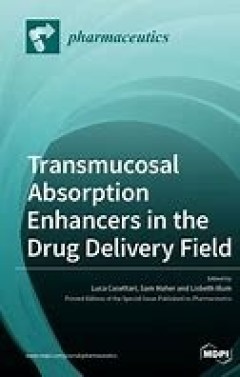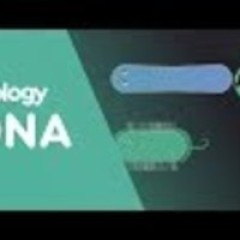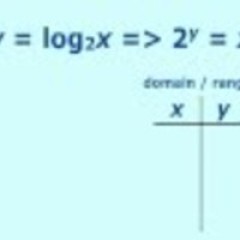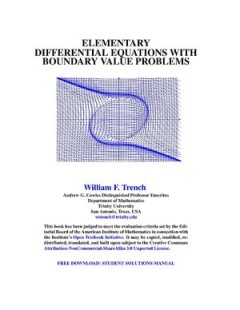Filter by

Animals and the Shaping of Modern Medicine
This book breaks new ground by situating animals and their diseases at the very heart of modern medicine. In demonstrating their historical significance as subjects and shapers of medicine, it offers important insights into past animal lives, and reveals that what we think of as ‘human’ medicine was in fact deeply zoological. Each chapter analyses an important episode in which animals chang…
- Edition
- -
- ISBN/ISSN
- -
- Collation
- -
- Series Title
- -
- Call Number
- 610

Transmucosal Absorption Enhancers in the Drug Delivery Field
Development of strategies to assist the movement of poorly permeable molecules across biological barriers has long been the goal of drug delivery science. In the last three decades, there has been an exponential increase in advanced drug delivery systems that aim to address this issue. However, most proprietary delivery technologies that have progressed to clinical development are based on perm…
- Edition
- -
- ISBN/ISSN
- -
- Collation
- -
- Series Title
- -
- Call Number
- 610

Brain and Human Body Modeling
This open access book describes modern applications of computational human modeling in an effort to advance neurology, cancer treatment, and radio-frequency studies including regulatory, safety, and wireless communication fields. Readers working on any application that may expose human subjects to electromagnetic radiation will benefit from this book’s coverage of the latest models and techni…
- Edition
- -
- ISBN/ISSN
- -
- Collation
- -
- Series Title
- -
- Call Number
- 610

Medical Terminology for Healthcare Professions
Medical Terminology for Healthcare Professions is an Open Educational Resource (OER) that focuses on breaking down, pronouncing, and learning the meaning of medical terms within the context of anatomy and physiology. This resource is targeted for Healthcare Administration, Health Sciences, and Pre-Professional students.
- Edition
- -
- ISBN/ISSN
- -
- Collation
- -
- Series Title
- -
- Call Number
- 610

Density of Different States
In this video we are going to look at what density is, how it is measured and the differences in density between the different states of matter. Informally, density is a measure of how ‘packed’ a material is with mass. Density is defined as the mass of an object per its unit volume. So the big beach ball has a small mass but a big volume, meaning it’s density is low. Whereas the pebble is…
- Edition
- -
- ISBN/ISSN
- -
- Collation
- -
- Series Title
- -
- Call Number
- 500

What is DNA
DNA (deoxyribose nucleic acid) is extremely important. All living things have DNA, or in the case of some viruses they have RNA instead. In eukaryotes, it is found within the nucleus and is arranged into chromosomes. DNA determines the characteristics of an organism. Specific codes of DNA are called genes. DNA is made up of nucleotides. Nucleotides are repeating units, that are made up…
- Edition
- -
- ISBN/ISSN
- -
- Collation
- -
- Series Title
- -
- Call Number
- 500

Functions and Relations
Part of the NCSSM Online AP Calculus Collection: This video deals with transformations of functions including parent functions and the library of functions and relations. http://www.dlt.ncssm.edu Please attribute this work as being created by the North Carolina School of Science and Mathematics. This work is licensed under Creative Commons CC-BY http://creativecommons.org/licenses/by/3.0 …
- Edition
- -
- ISBN/ISSN
- -
- Collation
- -
- Series Title
- -
- Call Number
- 500

Chemistry 2e
Chemistry 2e is designed to meet the scope and sequence requirements of the two-semester general chemistry course. The textbook provides an important opportunity for students to learn the core concepts of chemistry and understand how those concepts apply to their lives and the world around them. The book also includes a number of innovative features, including interactive exercises and real-wor…
- Edition
- -
- ISBN/ISSN
- -
- Collation
- -
- Series Title
- -
- Call Number
- 500

Contemporary Calculus I . For the students
This is a textbook for differential calculus with explanations, examples, worked solutions, problem sets and answers. It has been reviewed by calculus instructors and class-tested by them and the author. Topics are typically introduced by way of applications, and the text contains the usual theorems and techniques of a first course in calculus. Besides technique practice and applications of th…
- Edition
- -
- ISBN/ISSN
- -
- Collation
- -
- Series Title
- -
- Call Number
- 500

Elementary Differential Equations
Elementary Differential Equations with Boundary Value Problems is written for students in science, engineering, and mathematics who have completed calculus through partial differentiation. If your syllabus includes Chapter 10 (Linear Systems of Differential Equations), your students should have some preparation in linear algebra. In writing this book I have been guided by the these principles: …
- Edition
- -
- ISBN/ISSN
- -
- Collation
- -
- Series Title
- -
- Call Number
- 500
 Computer Science, Information & General Works
Computer Science, Information & General Works  Philosophy & Psychology
Philosophy & Psychology  Religion
Religion  Social Sciences
Social Sciences  Language
Language  Pure Science
Pure Science  Applied Sciences
Applied Sciences  Art & Recreation
Art & Recreation  Literature
Literature  History & Geography
History & Geography